
All Solutions
Page 482: Lesson Check
Therefore, the speeds of the first wave and the second wave are given as
$$
begin{align*}
v_1 & = 1.0 mathrm{m/s} \
v_2 & = -1.0 mathrm{m/s}
end{align*}
$$
As time passes the first wave move towards right and the second wave move towards left.
textbf{(a)}
$$
The sketch of the resultant waves at $t=1.0$ s is shown in the given figure.
In this graph, both the pulses are far from each other.
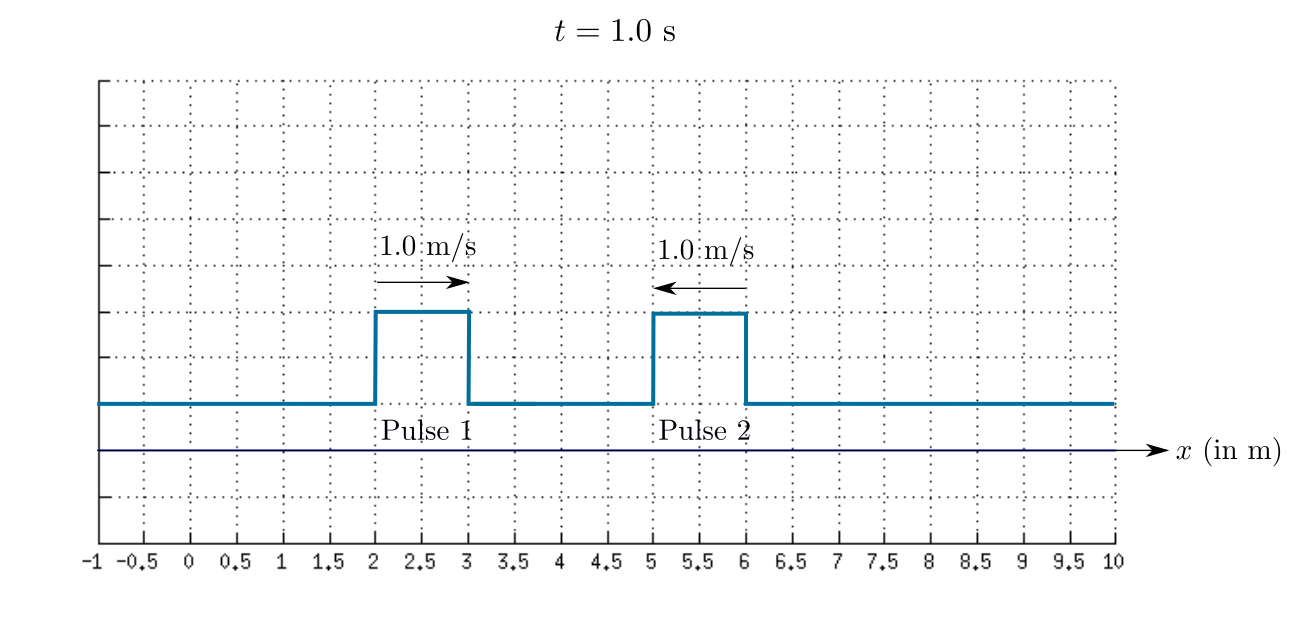
textbf{(b)}
$$
The sketch of the resultant waves at $t=2.0$ s is shown in the given figure.
In this graph, both the pulses are side by side (but not meeting). Therefore, the width of the resultant pulse has increased.
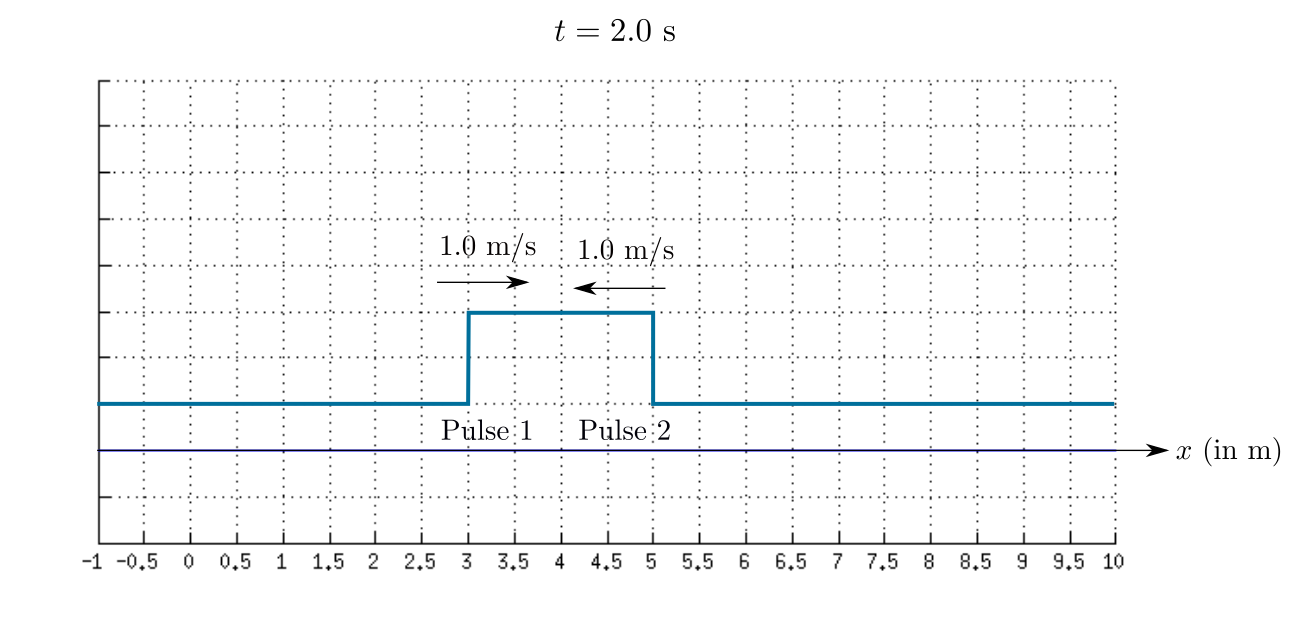
textbf{(c)}
$$
The sketch of the resultant waves at $t=2.5$ s is shown in the given figure.
In this graph, both the pulses are exactly meeting each other. Therefore, the height of the resultant pulse has increased but the width is the same.
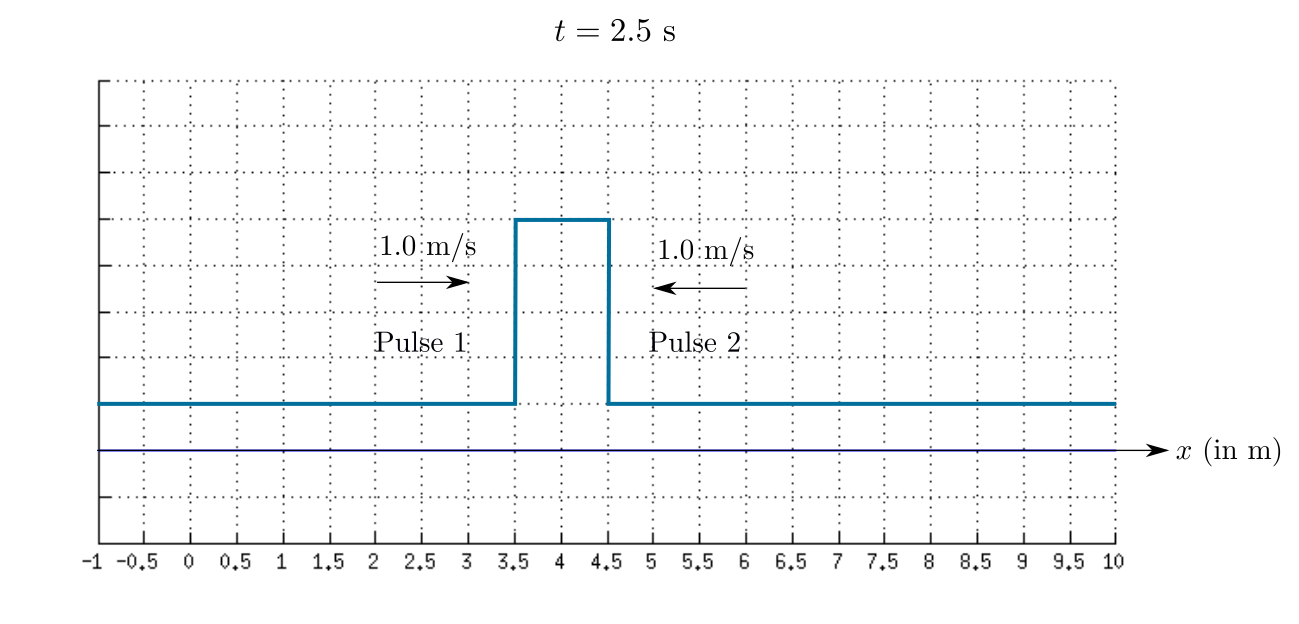
textbf{(d)}
$$
The sketch of the resultant waves at $t=3.0$ s is shown in the given figure.
In this graph, both the pulses are side by side (but not meeting). Therefore, the width of the resultant pulse has increased.
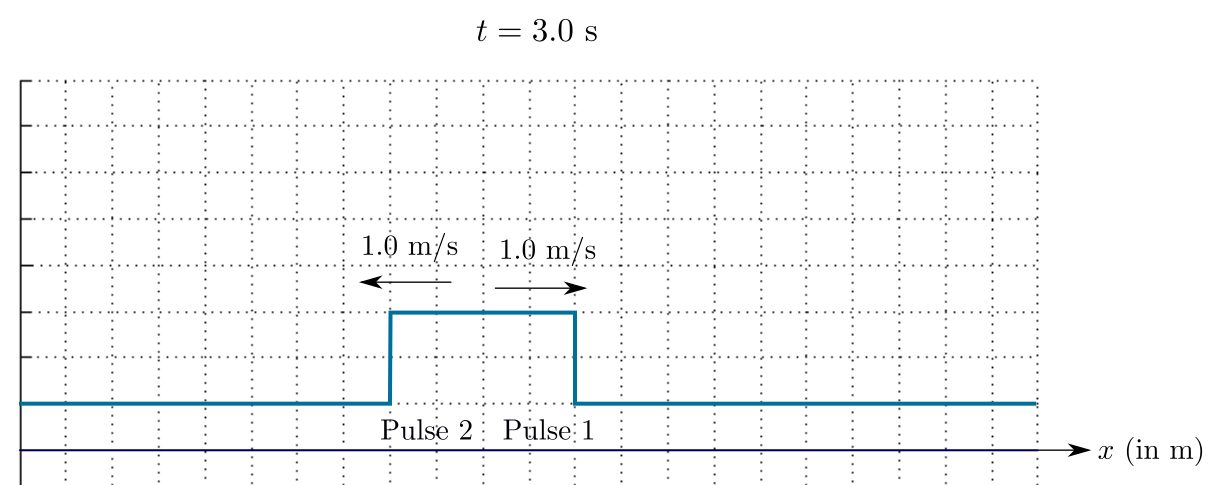
textbf{(e)}
$$
The sketch of the resultant waves at $t=4.0$ s is shown in the given figure.
In this graph, both the pulses are far from each other.
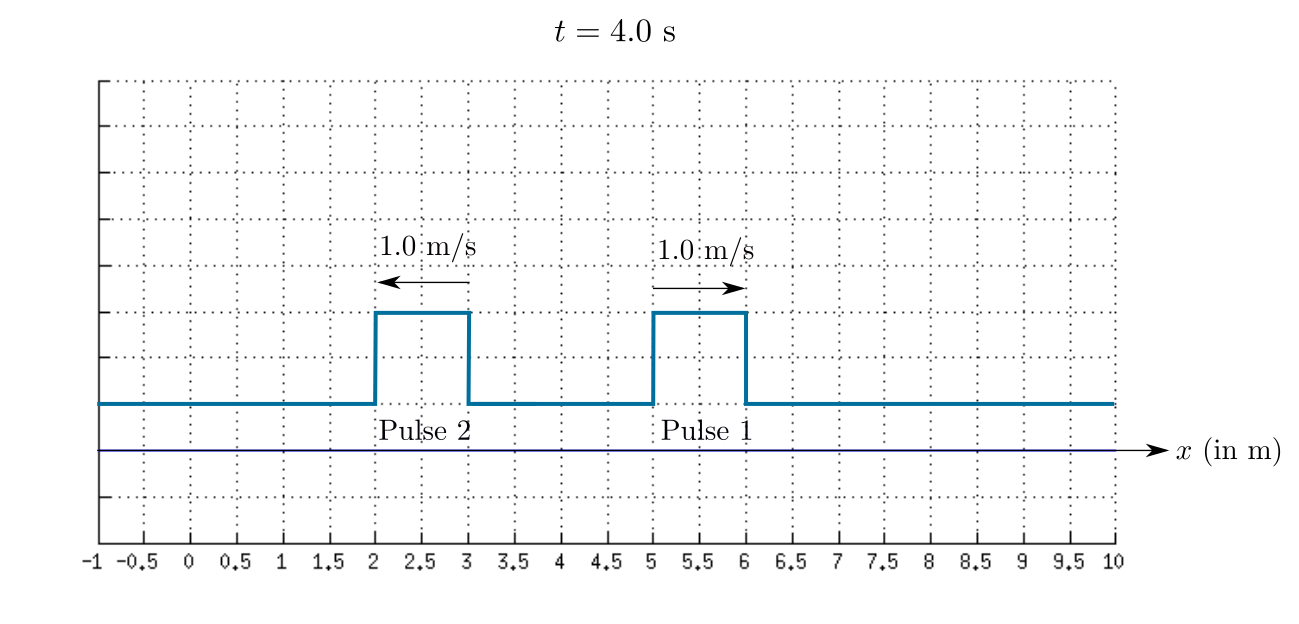
Let us suppose that two waves have the same amplitude and wavelength, and they interfere with each other.
If these two waves have the same phase they interfere constructively. If they have $phi = pi$ phase difference than they interfere destructively.
All the phases between zero to $2pi$ give a resultant wave with different amplitudes. Hence, we see a wave having amplitude from minimum to maximum (or maximum to minimum) at the same place. Therefore, we see a standing wave.
Hence, a standing wave involves both constructive and destructive interference which can be seen in the given graphs.
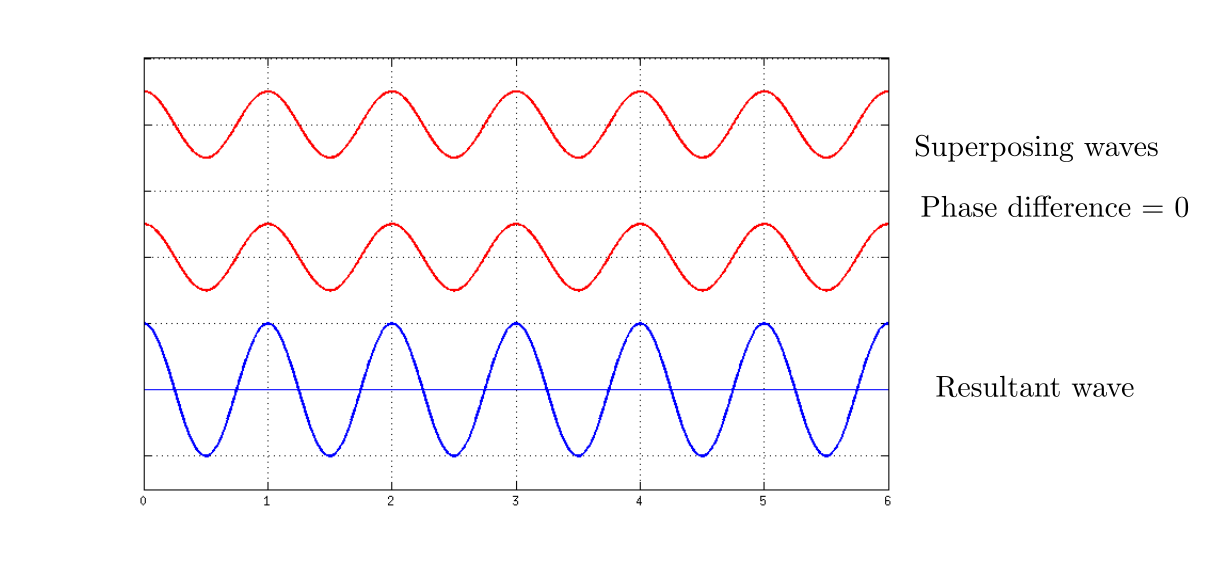
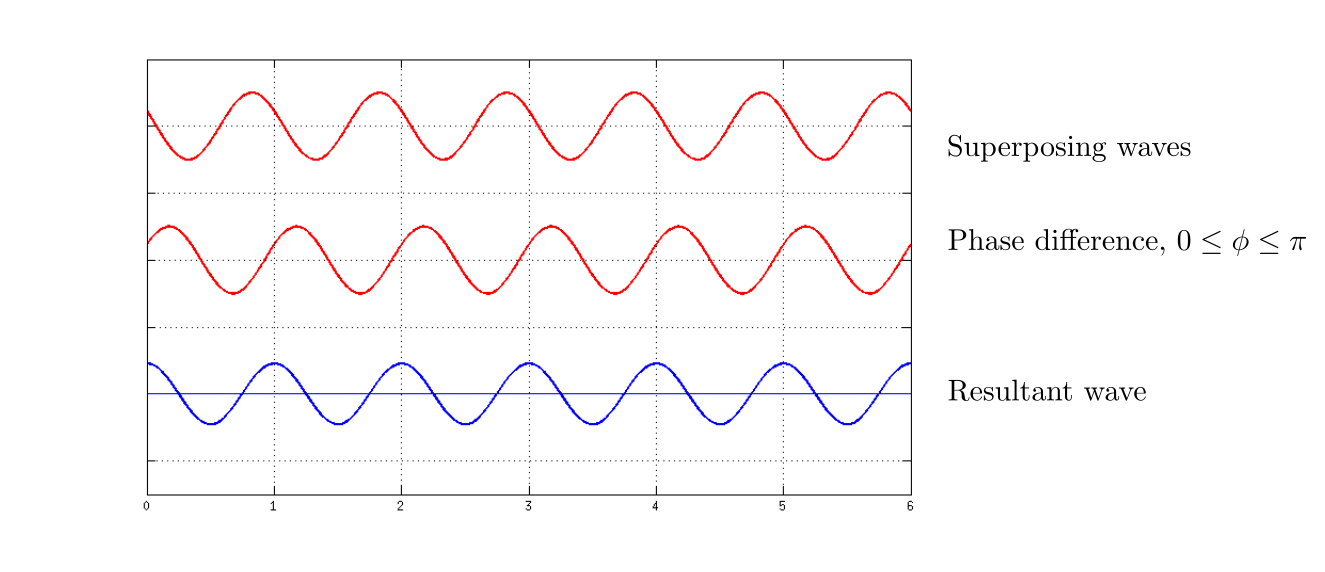
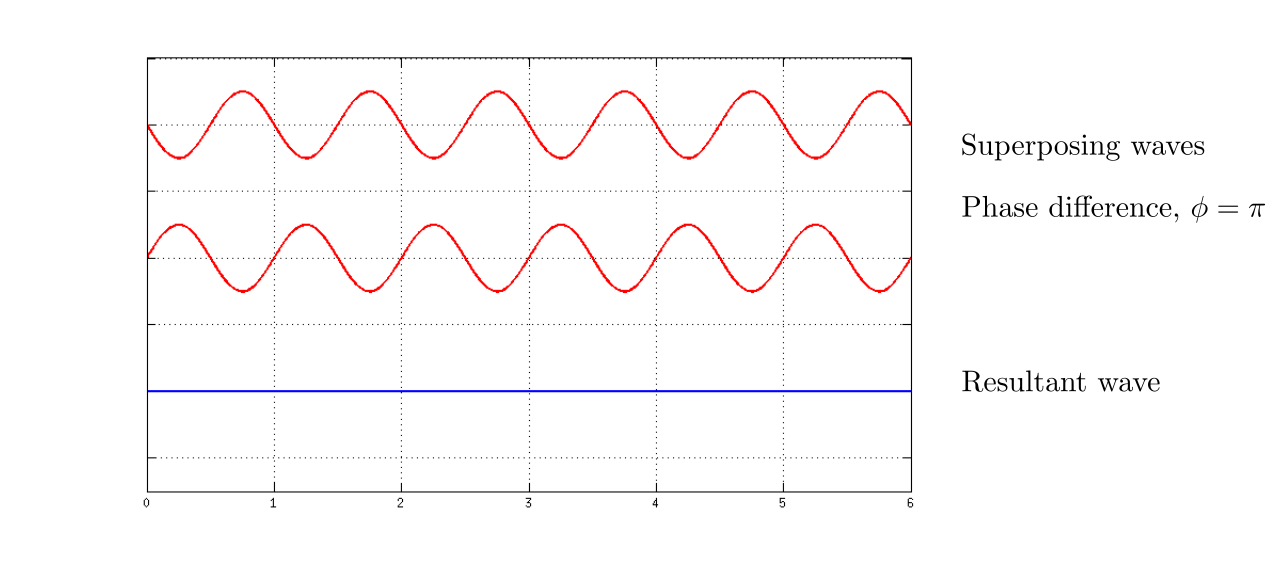
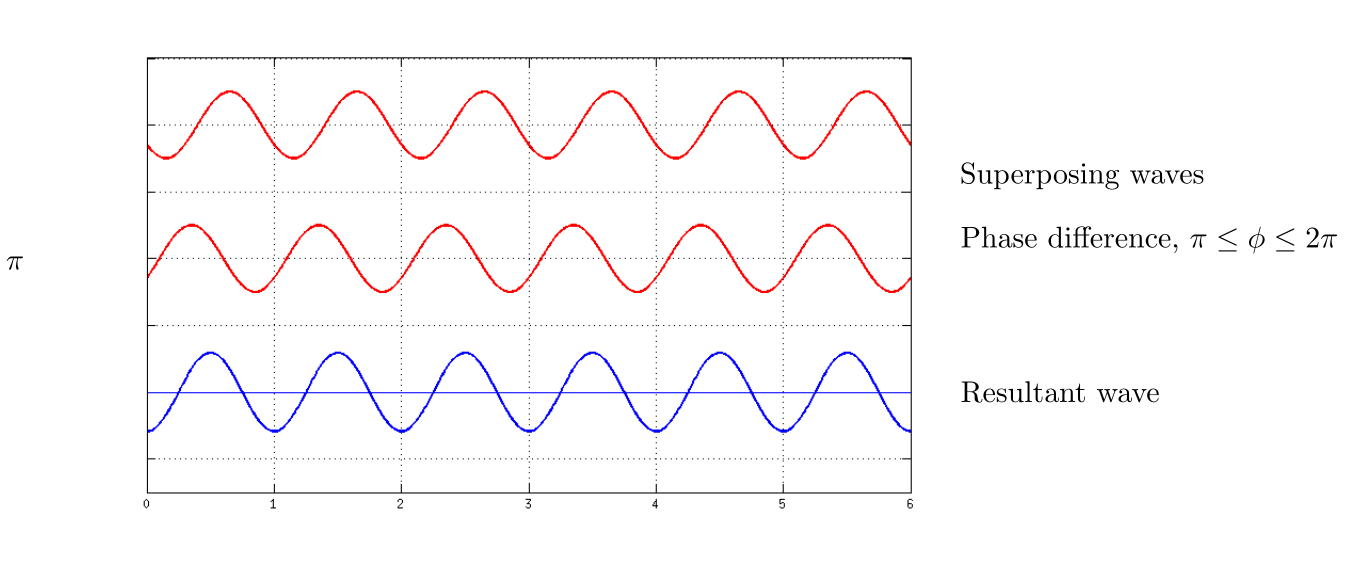
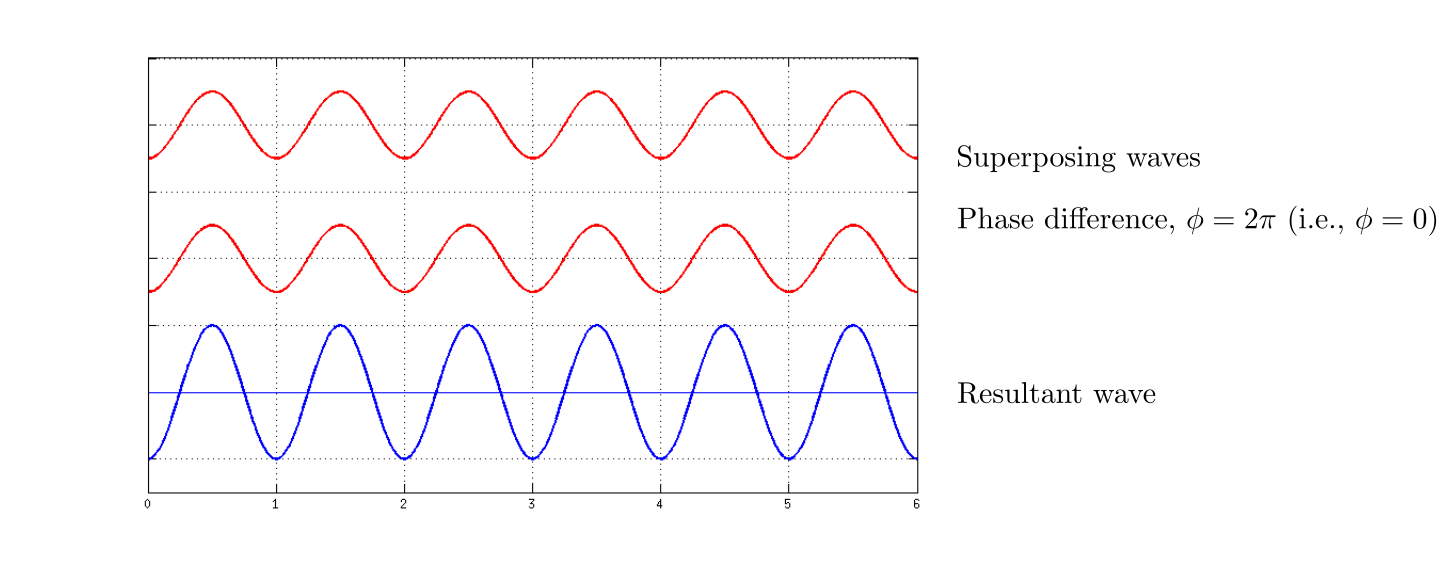

we get, lower the wavelegth, higher is the frequency.
In short,yes,higher harmonics always have greater frequencies than lower harmonics
usual wave on a string.
The second harmonic consists of two half wavelengths of the wave.
The third harmonic consists of three half wavelengths of the wave and so on.
Therefore, the corresponding frequencies of higher harmonics are higher than that of lower harmonics.
A guitar makes standing waves with nodes at the ends.
In the given figure, we see that–
The fundamental mode (first harmonic) is shown which has two nodes and one antinode.
The second harmonic has three nodes and two antinodes.
The third harmonic has four nodes and three antinodes.
Therefore, the vibrating guitar with two antinodes has second harmonic.

$$
begin{align*}
L & = 66 mathrm{cm}
end{align*}
$$
As shown in the given figure, the second harmonic has wavelength equal to the length of the string.
Therefore, the wavelength of the wave is
$$
begin{align*}
lambda & = L \
lambda & = 66 mathrm{cm} \
& hspace*{-3mm}boxed{lambda = 66 mathrm{cm} }
end{align*}
$$

(b) ${lambda = 66 mathrm{cm} }$
item
The standing wave the guitar vibrates with has two antinodes. \
If it had one antinode it would have been the first harmonic, since it has two we conclude that this is the second harmonic.
item
For the second harmonic we know that one whole wavelength will fit across the string, that is:
begin{align*}
lambda = L = 66text{ cm}
end{align*}
end{enumerate}
item
The second harmonic
item
The wavelength is $lambda = 66text{ cm}$
end{enumerate}
begin{align*}
L = n cdot frac{lambda}{2}
end{align*}
Since the length of the string is $ L = 33text{ cm}$ we get:
begin{align*}
2 cdot L = 2 cdot 33text{ cm} = 66text{ cm} = n cdot lambda
end{align*}
From this we see that any wavelength $lambda$ that fulfils this equation for an integer $n$ can produce a standing wave. \
begin{enumerate}[For]
item
$lambda_1 = 0.22text{ m}$ we get $n_1 = frac{66text{cm}}{22text{ cm}} = 3$
item
$lambda_2 = 0.33text{ m}$ we get $n_2 = frac{66text{cm}}{33text{ cm}} = 2$
item
$lambda_3 = 0.44text{ m}$ we get $n_3 = frac{66text{cm}}{44text{ cm}} = 1.5$
item
$lambda_4 = 0.66text{ m}$ we get $n_4 = frac{66text{cm}}{66text{ cm}} = 1$
end{enumerate}
Since $n_1$ , $n_2$ and $n_4$ are integers all of these wavelengths $lambda_1 , lambda_2 , lambda_4$ form standing waves. \\
These are actually the third, second and first harmonics.
$$
begin{align*}
L = frac{lambda}{2}
end{align*}
$$
Plugging in the value for the wavelength of the first harmonic $lambda = 0.65text{ m}$ we get:
$$
begin{align*}
L = frac{0.65text{ m}}{2} = 0.325text{ m}
end{align*}
$$
Haven't found what you were looking for?
Search for samples, answers to your questions and flashcards

